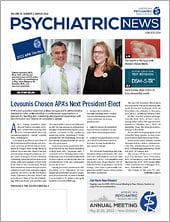Government Steps Up Efforts to Enforce Parity Law | Psychiatric News – Psychiatric News

iStock/JL Images
Federal agencies are using recently gained authority to crack down on health plans that are not complying with the Mental Health Parity and Addiction Equity Act (MHPAEA) of 2008. A recent report to Congress outlines the enforcement work that has been done so far and illustrates the extent to which many plans are out of compliance, potentially cutting off thousands of people from the mental and substance use disorder treatments they need.
The report was issued by the departments of Labor (DOL), Health and Human Services (HHS), and Treasury as a requirement of the Consolidated Appropriations Act (CAA), which was enacted in December 2020 and included APA’s priority legislation, the Strengthening Behavioral Health Parity Act. The CAA amended MHPAEA to require health plans to perform and document comparative analyses of their non-quantitative treatment limits (NQTLs), which are the elements of a health plan’s coverage that are not numerical, such as prior authorization and formulary design.
NQTLs have, historically, been difficult to identify, and it is challenging for federal and state agencies to determine whether plans’ NQTLs comply with the parity law (Psychiatric News https://psychnews.psychiatryonline.org/doi/10.1176/appi.pn.2021.8.19). The comparative analyses are vital for parity enforcement: Before the CAA, plans were not explicitly required to demonstrate and document that their NQTLs complied with the parity law, which was a major roadblock for enforcement.
Yet, as of the report’s release in January, none of the analyses that the Employee Benefits Services Administration (EBSA) and Centers for Medicare and Medicaid Services (CMS) reviewed contained sufficient information for the agencies to determine compliance. As a result, EBSA has so far issued 80 insufficiency letters to plans requesting additional information, while CMS has issued 19 such letters. Even among the insufficient analyses, though, the two agencies identified parity violations. They issued 45 determination letters related to NQTLs that were out of parity with medical/surgical benefits.
“It’s particularly disappointing because last April, the departments released guidance on what the analyses should contain, and yet the analyses were still insufficient,” said David Lloyd, senior policy advisor with the Kennedy Forum. “Hopefully, this is a wakeup call to plans that the departments will be rigorously investigating them for parity.”
Even in the first year since the CAA’s enactment, the federal agencies’ enforcement work has significantly impacted thousands of patients. So far, EBSA and CMS have received 25 corrective action plans, which must include the actions the health plans will take to come into compliance. Another 26 health plans have already agreed to make changes to their plans.
The report includes several examples of enforcement leading to expanded access. EBSA discovered that a large service provider of self-funded plans was excluding applied behavior analysis (ABA) treatment for children with autism spectrum disorder. ABA “can improve the trajectory of a child’s development,” the report noted. After issuing requests for comparative analyses and initial findings of noncompliance to some of those plans, three health plans confirmed that they will now cover ABA therapy for autism, impacting over 18,000 plan participants.
EBSA also issued a determination letter to a plan that excluded methadone and naltrexone as treatments for substance use disorders. After receiving the letter, the plan, which covers 7,600 people, removed the exclusion and notified its beneficiaries of the change. Two other plans covered nutritional counseling for medical/surgical conditions such as diabetes, but not for mental disorders such as anorexia nervosa, bulimia nervosa, and binge-eating disorder. After EBSA made inquiries, the plans removed the exclusion, impacting over 1.2 million participants.
“EBSA and HHS are committed to using all their available authority to ensure that individuals realize the full promise of MHPAEA and to ensure that Americans … can access [mental and substance use disorder] care that is not limited in any way that medical/surgical care is not,” the report stated. “The [d]epartments have determined that this goal can only be achieved through proactive and rigorous enforcement of MHPAEA.”
“One of the report’s biggest takeaways is that there is still a lot of work to be done before we have full compliance with this law,” said Tim Clement, M.P.H., APA’s director of legislative development. APA’s continued advocacy to help achieve that goal is vital, he said.
The departments emphasized in the report how additional enforcement tools would facilitate greater access to treatment for mental and substance use disorders. Allowing EBSA to apply monetary penalties for parity violations, for example, “has the potential to greatly strengthen the protections of MHPAEA,” the report stated.
“The parity law was meant to increase access to care because mental health and substance use disorders have been discriminated against for so long in health insurance coverage,” Lloyd said. “At the end of the day, it’s all about access to treatment.” ■
“Realizing Parity, Reducing Stigma, and Raising Awareness: Increasing Access to Mental Health and Substance Use Disorder Coverage” is posted here.







